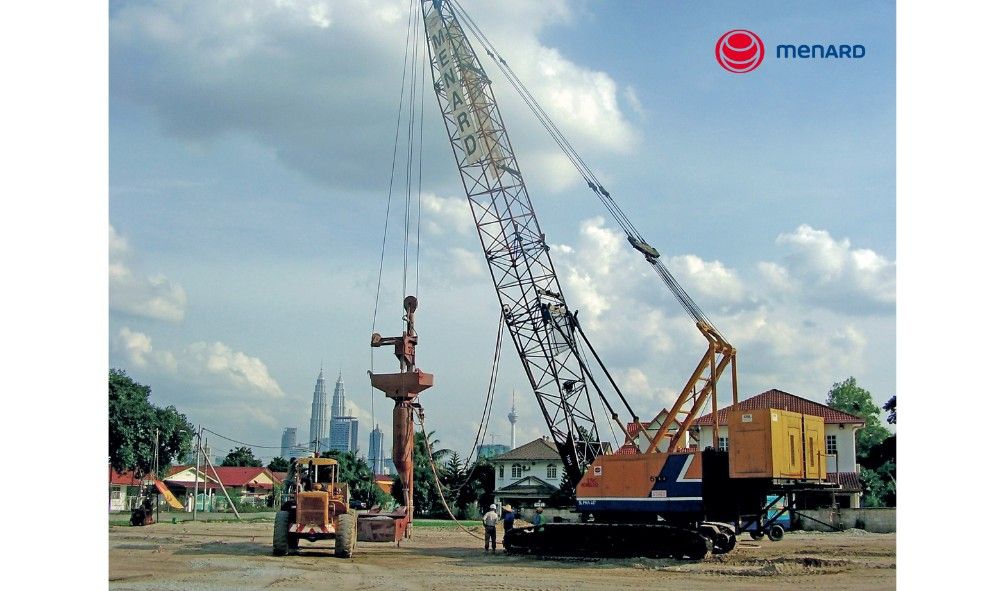Stone Column (SC) is aggregate column formed by inserting a vibratory probe to incorporate granular material into the ground to create a vertical inclusion.

Presentation and key elements
Stone Columns are made with various methods with the use of different equipment units depending on the depth and diameter of the columns and parameters of the soil to be improved. The popularity of this method resulted in its widespread use.
The typical Stone Columns (SC) are formed by inserting an electrical or hydraulic vibroflot mounted on a base machine. Depending on the depth of the columns, the following units are used: an excavator (up to 7 m), a purpose-built rig (up to 20 m) or a crawler crane (up to 40 m).
The installation starts by inserting the vibroflot into the ground up to the design depth and the process is often assisted by injecting compressed air, water or air-water mix. Subsequently, aggregate backfill is placed into the space formed and compacted in stages by adding the aggregate at every 0.5 m. Depending on the methods, aggregate is supplied via a feeding pipe connected to the vibroflot (bottom feed) or from the level of the working platform along the vibroflot (top feed). Typically the columns formed are 50 to 120 cm in diameter depending on the subsoil stiffness.

Stone Columns are well suited for the improvement of soft or loose soils as they create vertical inclusions with high stiffness, shear strength and draining characteristics. The result is an increased bearing capacity and a reduction of the total and differential settlements. They are particularly effective in improving slope stability and preventing liquefaction by increasing the ground’s shear strength.
Our projects
Cambodia | Bakheng Water Production Facilities at Phase 3
Cambodia | LFRD School Building
Cambodia | Luang Mae Hospital Bunker Project
Cambodia | Cargo Terminal Building for Techo International Airport – CMC
Cambodia | Data Center Building – CMC
















